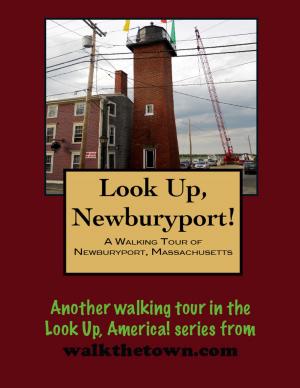Look Up, Honolulu! A Walking Tour of Honolulu, Hawaii
Nonfiction, Travel, United States, West, History, Americas| Author: | Doug Gelbert | ISBN: | 9781301283354 |
| Publisher: | Doug Gelbert | Publication: | March 4, 2013 |
| Imprint: | Smashwords Edition | Language: | English |
| Author: | Doug Gelbert |
| ISBN: | 9781301283354 |
| Publisher: | Doug Gelbert |
| Publication: | March 4, 2013 |
| Imprint: | Smashwords Edition |
| Language: | English |
There is no better way to see America than on foot. And there is no better way to appreciate what you are looking at than with a walking tour.
Each walking tour describes historical and architectural landmarks and provides pictures to help out when those pesky street addresses are missing. Every tour also includes a quick primer on identifying architectural styles seen on American streets.
Although the first settlers, the Polynesians, were probably in the Hawaiian Islands a thousand years ago, today’s Honolulu began to take shape in 1795 when King Kamehameha I unified the Hawaiian Islands, conquering the king of Oahu. The royal monarchy would last just short of 100 years before being tossed out and in that time Honolulu would grow into a cosmopolitan town.
Its central location in the Pacific Ocean meant that the port of Honolulu was on call for Russian, English, French and American traders. Missionaries from Boston and New York established bulkheads in Honolulu in the 1820s. Not that their efforts weren’t welcome but they were shuffled off to land in the southeast of town that was considered too arid for any useful purpose. They constructed residences and houses of worship nonetheless on land that today is the heart of downtown Honolulu. In 1850 King Kamehameha III proclaimed Honolulu as the capitol city and built his government palace in the area.
The influx of Westerners took its toll on the native Hawaiians. By the time Queen Liliuokalani, the last Hawaiian monarch, was pushed off the throne by a cartel of American businessmen and United States Marines in 1893 it was estimated that the population of Hawaiians had declined by as much as 80% from a century before. Five years later, the Islands were annexed by the United States.
In 1907 Honolulu was incorporated both as a city and a county embracing the island of Oahu. By that time the economy was dominated by an oligarchy of sugar companies referred to as The Big Five. Also, in 1899, after graduating from Harvard, James Dole sailed to Hawaii, where his cousin Sanford was Governor of the Territory, to seek his fortune. With him he packed a $1200 nest egg. When he died at the age of 80 the New York Times wrote, “Mr. Dole was personally responsible for the pineapple industry, the popularity of that fruit in the United States, and in large measure, for the prosperity of the Hawaiian Islands.”
Hawaii was squarely on the path to American statehood which it achieved in 1959. Today more than seven million tourists fly into Honolulu each year, greeted by a thoroughly modern city. But interspersed among the steel-and-glass towers is some of the most exciting century-old architecture in the country and we will begin our explorations in the center of downtown at the only royal building in the United States...
There is no better way to see America than on foot. And there is no better way to appreciate what you are looking at than with a walking tour.
Each walking tour describes historical and architectural landmarks and provides pictures to help out when those pesky street addresses are missing. Every tour also includes a quick primer on identifying architectural styles seen on American streets.
Although the first settlers, the Polynesians, were probably in the Hawaiian Islands a thousand years ago, today’s Honolulu began to take shape in 1795 when King Kamehameha I unified the Hawaiian Islands, conquering the king of Oahu. The royal monarchy would last just short of 100 years before being tossed out and in that time Honolulu would grow into a cosmopolitan town.
Its central location in the Pacific Ocean meant that the port of Honolulu was on call for Russian, English, French and American traders. Missionaries from Boston and New York established bulkheads in Honolulu in the 1820s. Not that their efforts weren’t welcome but they were shuffled off to land in the southeast of town that was considered too arid for any useful purpose. They constructed residences and houses of worship nonetheless on land that today is the heart of downtown Honolulu. In 1850 King Kamehameha III proclaimed Honolulu as the capitol city and built his government palace in the area.
The influx of Westerners took its toll on the native Hawaiians. By the time Queen Liliuokalani, the last Hawaiian monarch, was pushed off the throne by a cartel of American businessmen and United States Marines in 1893 it was estimated that the population of Hawaiians had declined by as much as 80% from a century before. Five years later, the Islands were annexed by the United States.
In 1907 Honolulu was incorporated both as a city and a county embracing the island of Oahu. By that time the economy was dominated by an oligarchy of sugar companies referred to as The Big Five. Also, in 1899, after graduating from Harvard, James Dole sailed to Hawaii, where his cousin Sanford was Governor of the Territory, to seek his fortune. With him he packed a $1200 nest egg. When he died at the age of 80 the New York Times wrote, “Mr. Dole was personally responsible for the pineapple industry, the popularity of that fruit in the United States, and in large measure, for the prosperity of the Hawaiian Islands.”
Hawaii was squarely on the path to American statehood which it achieved in 1959. Today more than seven million tourists fly into Honolulu each year, greeted by a thoroughly modern city. But interspersed among the steel-and-glass towers is some of the most exciting century-old architecture in the country and we will begin our explorations in the center of downtown at the only royal building in the United States...















